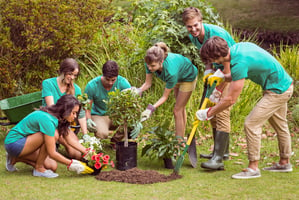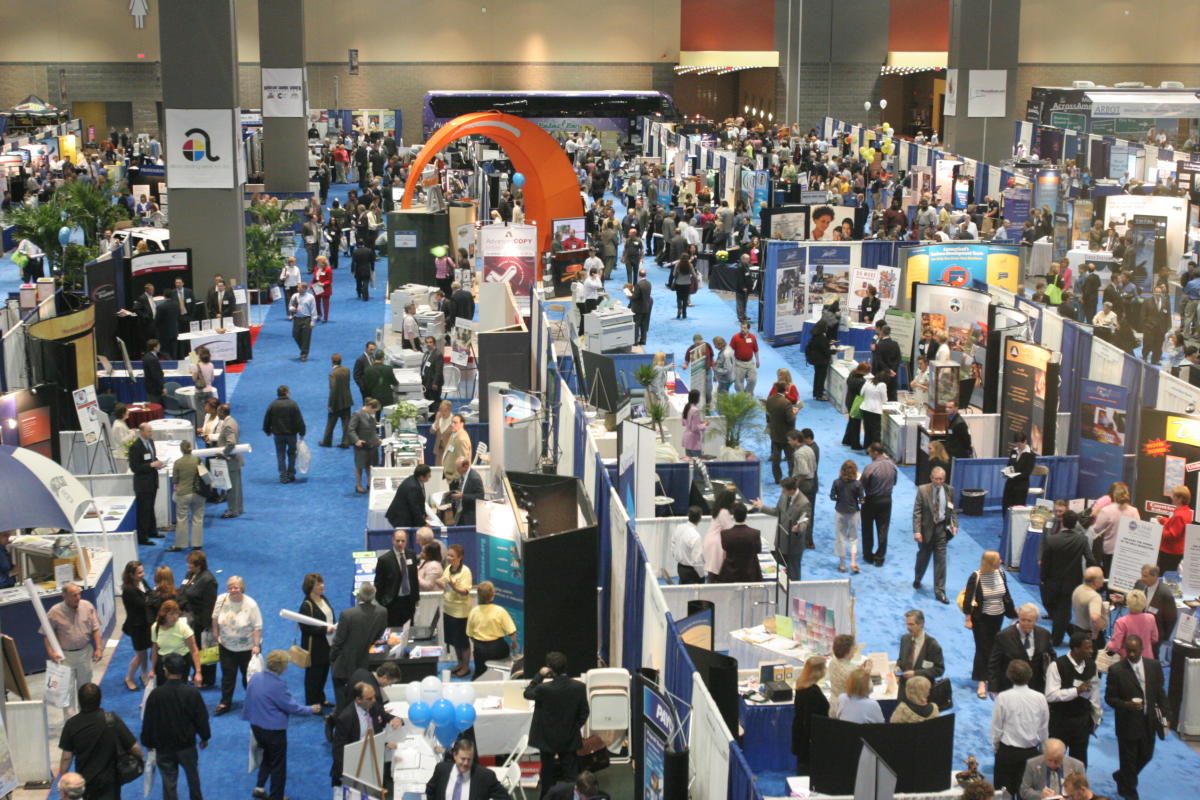Creativity and innovation can make all the difference when it comes to nonprofit fundraising....
6 tips for sustainability in events: What attendees care about
The conversation around sustainability has moved from a niche interest to a mainstream expectation, and the events industry is at the center of this shift. Attendees are no longer just passive participants; they are conscious consumers who want to see their values reflected in the events they choose to support. For event organizers, this means green initiatives are not just a "nice-to-have" but a core component of a successful event strategy.
Understanding what aspects of sustainability resonate most with attendees can be the difference between a good initiative and a great one. While grand gestures are admirable, it’s often the tangible, visible efforts that make the biggest impression. A study by MiceBook found that 80% of event planners say their organizations consider sustainability when planning events, highlighting the industry's response to this growing demand.
So, what do attendees actually care about? They want to see genuine, practical steps that make a real difference. This isn't about perfection; it's about authentic effort and transparent communication. Let’s explore the key areas of sustainable events that matter most to your audience.

Table of contents
- The shift in attendee expectations
- Visible waste reduction efforts
- Reducing the carbon footprint
- Ethical sourcing and sustainable materials
- Positive community and social impact
- Clear communication is key
The shift in attendee expectations
Today’s attendees are more informed and environmentally conscious than ever before. This awareness directly influences their purchasing decisions, including which events they decide to attend. They are looking for more than just a good time; they seek experiences that align with their personal values.
According to Stratosphere, attendees identify sustainable practices as a priority when deciding whether to attend an in-person event.The demand for eco-friendly event planning is no longer a fringe movement.
Key shifts in attendee expectations:
- Transparency over grand claims: Attendees are wary of "greenwashing" and prefer to see clear, honest communication about your sustainability efforts, including both successes and challenges.
- Practical impact over abstract goals: Tangible actions like providing water refill stations or using compostable food containers resonate more strongly than vague promises.
- A desire to participate: Many attendees want to be part of the solution. Offering them simple ways to contribute, like sorting their waste correctly, can increase engagement and satisfaction.
This evolution means event organizers must move beyond simply stating they are "green." You need to show it, prove it, and involve your audience in the journey.
Visible waste reduction efforts
Waste is one of the most visible environmental impacts of any large gathering. From single-use plastics to food scraps, the amount of trash an event generates is a powerful and immediate symbol of its footprint. Because it’s so noticeable, it’s also where attendees look first for signs of your commitment to sustainability.
Making your waste reduction efforts visible and easy to understand is a powerful way to connect with your audience.
What attendees want to see:
- Accessible recycling and composting bins: Clearly labeled, multi-stream waste stations placed in convenient locations are essential. If attendees can't easily find them or understand them, they can't use them.
- Elimination of single-use plastics: Replacing plastic water bottles with refillable stations and offering reusable cups are highly visible and appreciated actions.
- Sustainable food packaging: Attendees notice when their food comes in a compostable container versus a styrofoam one. Partnering with food vendors who use eco-friendly materials demonstrates a unified commitment.
For example, many music festivals have successfully implemented reusable cup programs where attendees pay a small deposit for a cup they can use throughout the event and return for a refund. This simple change drastically reduces plastic waste and serves as a constant reminder of the event's green initiatives.
Reducing the carbon footprint
While less visible than a pile of trash, an event’s carbon footprint is a major concern for environmentally savvy attendees. This includes everything from transportation emissions to energy consumption. Addressing your carbon footprint shows a deeper commitment to sustainability that goes beyond surface-level actions.
Many attendees are willing to make greener choices if you make them accessible and appealing.
How to address your event's carbon footprint:
- Promote green transportation: Encourage attendees to carpool, use public transit, or bike to the event by offering incentives like preferred parking spots or a small ticket discount.
- Source energy responsibly: While not always visible to attendees, you can communicate your use of renewable energy sources like solar or your purchase of carbon offsets. Mentioning this in your event materials or on signage can be highly effective.
- Rethink event materials: Reduce printed programs by investing in a robust mobile event app for schedules, maps, and updates. For any necessary printing, use recycled paper and soy-based inks.
A growing trend in event sustainability trends is incorporating a carbon offset option directly into the ticketing process, allowing attendees to pay a small extra fee to offset their travel emissions. This empowers them to take personal responsibility and actively participate in your sustainability goals.
Ethical sourcing and sustainable materials
What happens behind the scenes matters. Attendees are increasingly interested in the supply chain of the products and services offered at events. They want to support events that prioritize ethically sourced goods and support local communities.
This focus on ethical sourcing demonstrates a holistic approach to sustainability that extends beyond just environmental concerns. It shows you care about the people and economies connected to your event.
Ways to showcase ethical sourcing:
- Partner with local vendors: Highlight food, craft, and service providers from the local area. This not only reduces transportation emissions but also invests directly into the host community.
- Offer sustainable merchandise: If you sell event-branded merchandise, choose products made from organic cotton, recycled materials, or other sustainable sources.
- Promote farm-to-table food options: Work with caterers and food vendors who source their ingredients from local farms. Sharing the story of where the food comes from can be a powerful engagement tool.
Highlighting these partnerships on your website, in the event app, and through on-site signage helps attendees feel good about their purchases and your event's broader impact.
Positive community and social impact
Sustainability is not just about the environment; it’s also about social responsibility. Attendees want to see that an event is a positive force in its host city or region. Events that give back to local communities create a much deeper and more lasting connection with their audience.
Integrating social impact initiatives into your event framework demonstrates a well-rounded commitment to doing good.
Ideas for creating positive social impact:
- Partner with a local charity: Designate a local nonprofit as your official event partner. You can donate a portion of ticket sales, host a fundraising drive, or offer them a space to raise awareness. Some platforms even allow for a "double the donation" feature at checkout.
- Organize volunteer opportunities: Connect attendees with local community projects, either during or around the event dates. Learn about recruiting volunteers here.
- Ensure accessibility and inclusion: A truly sustainable event is one that is welcoming to everyone. Prioritizing accessibility for attendees with disabilities is a critical part of your social responsibility.
When attendees see that their participation contributes to a greater good, it enhances their overall experience and fosters a strong sense of loyalty to your event.
Clear communication is key
You can have the best green initiatives in the world, but if no one knows about them, their impact is limited. Transparent, consistent, and engaging communication is what turns your efforts into a compelling story that resonates with attendees.
Don’t be afraid to share your journey—including the areas where you are still working to improve. Authenticity builds trust.
Effective communication strategies:
- Create a dedicated sustainability page: Use your event website to detail your goals, actions, and progress.
- Share updates on social media: Post about your green initiatives before, during, and after the event. Use photos and videos to show your efforts in action. Read more about marketing strategies to grow your event.
- Use on-site signage: Place signs near waste stations, water refill points, and partner booths to explain your sustainability programs.
- Report your impact: After the event, share a report that quantifies your achievements, such as the amount of waste diverted from landfills or the total funds raised for a charity partner.
By keeping attendees informed, you make them feel like valued partners in your sustainability mission.
Building a greener future for events
Focusing on what attendees actually care about is the key to creating sustainable events that are both impactful and successful. By prioritizing visible waste reduction, addressing your carbon footprint, sourcing ethically, and making a positive community impact, you can meet and exceed the expectations of today’s conscious consumer.
Remember, the goal is progress, not perfection. Start with a few key initiatives, communicate them clearly, and build from there. When you show a genuine commitment to sustainability, you not only reduce your environmental impact but also build a stronger, more loyal community around your event.
For more insights on enhancing your event strategy and connecting with your audience, explore the valuable articles and guides available at resources.eventeny.com.
.
Enjoy what you're reading? Subscribe here to get more insights, industry news, and more!




